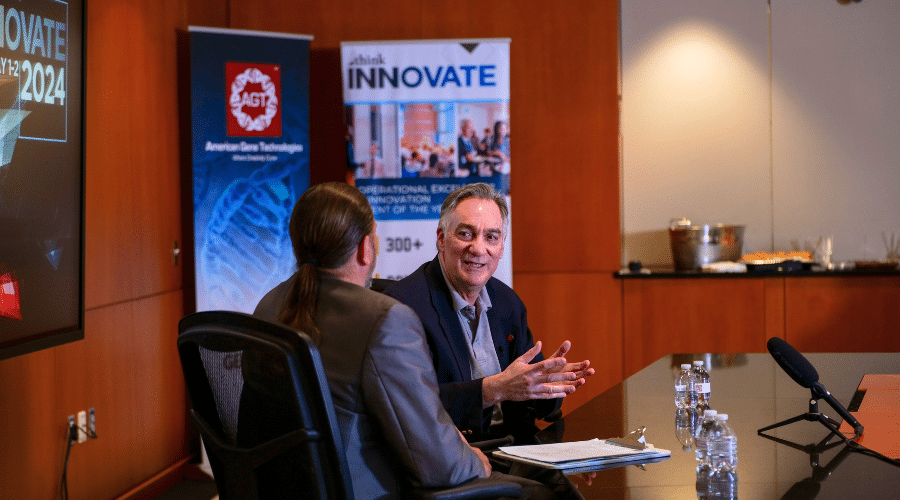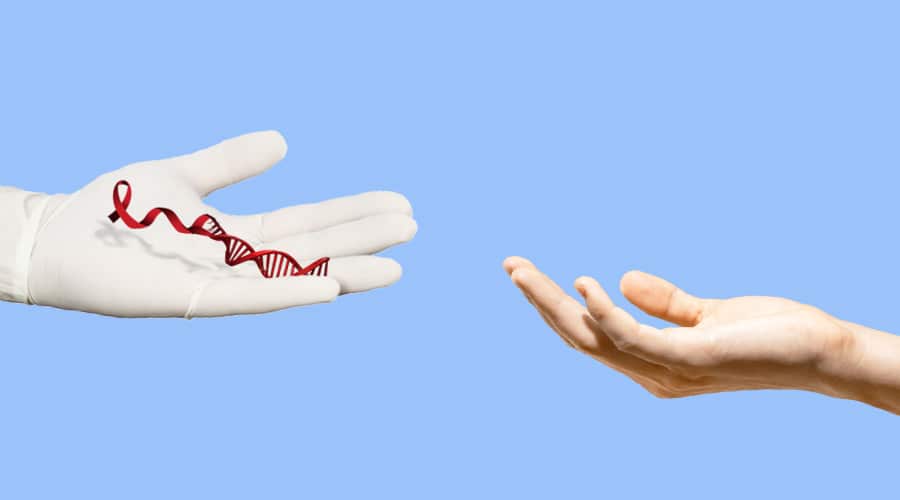HIV Has Been Cured For a 5th Time, Now Researchers Are Developing Scalable Methods


Contributing Author Luke Williams, Sales and Marketing
A mounting body of evidence shows that HIV, once thought to be an incurable lifelong condition, is indeed curable. The “Dusseldorf Patient” made headlines recently when a stem cell transplant to treat life-threatening cancer also cured him of HIV. However, the transplantation method is incredibly dangerous and the availability of rare, HIV-resistant donor cells limits its scalability. Promising new advances in gene therapy may overcome these obstacles – and prove to be a safe, scalable solution to HIV infection.
HIV is a curable condition
HIV is a tricky virus that exploits our immune system to replicate. In the 1980s, it was a death sentence, by the 1990s it was a life sentence, but in the mid 2000s, a team of doctors cured the first person of HIV. Timothy Ray Brown, previously known to the public only as The Berlin Patient, made his identity public in 2010 saying “I did not want to be the only person in the world cured of HIV”. While he is no longer with us, Mr. Brown’s wish came true, and the procedure which cured him of HIV was repeated on The London Patient, who would then reveal his identity in 2020. Just a few years later, we now have 5 cases:
- The Berlin Patient
- The London Patient
- The New York Patient
- The City of Hope Patient
- The Dusseldorf Patient
These patients were declared cured, or are under investigation to be declared cured, after undergoing a highly complex, risky procedure: the bone marrow transplant. This procedure is used as a last-line intervention to save patients with certain forms of blood cancer, and for the patients listed above, it had a secondary effect on their HIV status.
If the immune system is infected with HIV, replace it
HIV can hide in the DNA of infected cells and reactivate later, and since cells can copy HIV when they divide, HIV becomes deeply entangled with the host during infection. Modern antiretroviral drugs can block the virus from replicating, but the blueprints for the virus remain inside infected cells, making them the kingpins of infection. While these features of HIV make it difficult to approach, The Berlin Patient’s case showed the world what happens when the cells that HIV can infect are killed and replaced.
In patients with certain forms of cancer, wiping out cancerous immune cells can be the only way to save a patient. Leaving the patient without an immune system would be fatal, so doctors developed the bone marrow transplant as a way to install a new immune system. Since bone marrow contains the precursor cells to the immune system, the new bone marrow can give rise to a new immune system.
Wiping out the immune system can remove the bulk of HIV, but in order to prevent any surviving HIV from infecting the new immune system, bone marrow with HIV resistance is used to create a new immune system that can hunt HIV without being hunted by HIV. Patients like the Berlin and London Patients received bone marrow from rare donors with natural HIV resistance, but new procedures, like those used in the New York Patient, use alternate sources like cord blood.
Bone marrow transplants, an exceedingly dangerous HIV cure
The bone marrow transplant has life-saving potential for eligible patients, but with significant risks and a lengthy recovery time, the bone marrow transplant is not a viable option to cure HIV in a typical patient. In addition, considering how rare HIV-resistant donors are, the bone marrow transplant procedure used in the case studies mentioned here would not be able to provide a cure for the masses. Nevertheless, these case studies have proven that curing HIV is both possible and repeatable. Now the challenge is to prove that there is a safer, scalable method. To accomplish this, we are currently testing AGT103-T, a gene therapy for HIV, in human trials.
On to a safe, scalable HIV cure
Instead of replacing the entire immune system, we can modify a patient’s existing immune cells to make them resistant to HIV. With a simple blood draw, we can collect millions of immune cells that HIV would normally target and remove them from the body. While they are outside the body, we use a modified version of the viral shell that HIV uses to place its genome into cells – except this time, the shell delivers HIV resistance genes. When we return these HIV-resistant cells to the body, they have all the tools they need to direct the immune system’s weaponry toward HIV without being infected by HIV themselves. This approach has several advantages:
- Collecting and modifying immune cells from the blood is safer than replacing the entire immune system through a bone marrow transplant.
- Since the modification is performed outside the body, the patient only undergoes simple procedures, like a blood draw and an infusion.
- The viral shell that delivers our HIV resistance genes can be produced at scale, and it can be used to enhance immune cells in a common benchtop cell processing unit.
- Returning the modified immune cells to the patient can be performed at most infusion clinics.
A better world through better medicine
As we look at HIV’s story arc, we see monumental progress decade after decade, and a clear picture is emerging: it is possible to cure HIV. Through the years, HIV infection went from inevitably lethal to a permanent aspect of life for people living with HIV. Modern medicine has produced a wide diversity of drugs that can control HIV replication, and we even have preventative medications now such as PrEP – but it’s still not enough. We need a cure, and now is the time. Join us as we observe a clinical trial with the potential to take us into a new era where an HIV cure isn’t just possible, it’s also safe and scalable.





